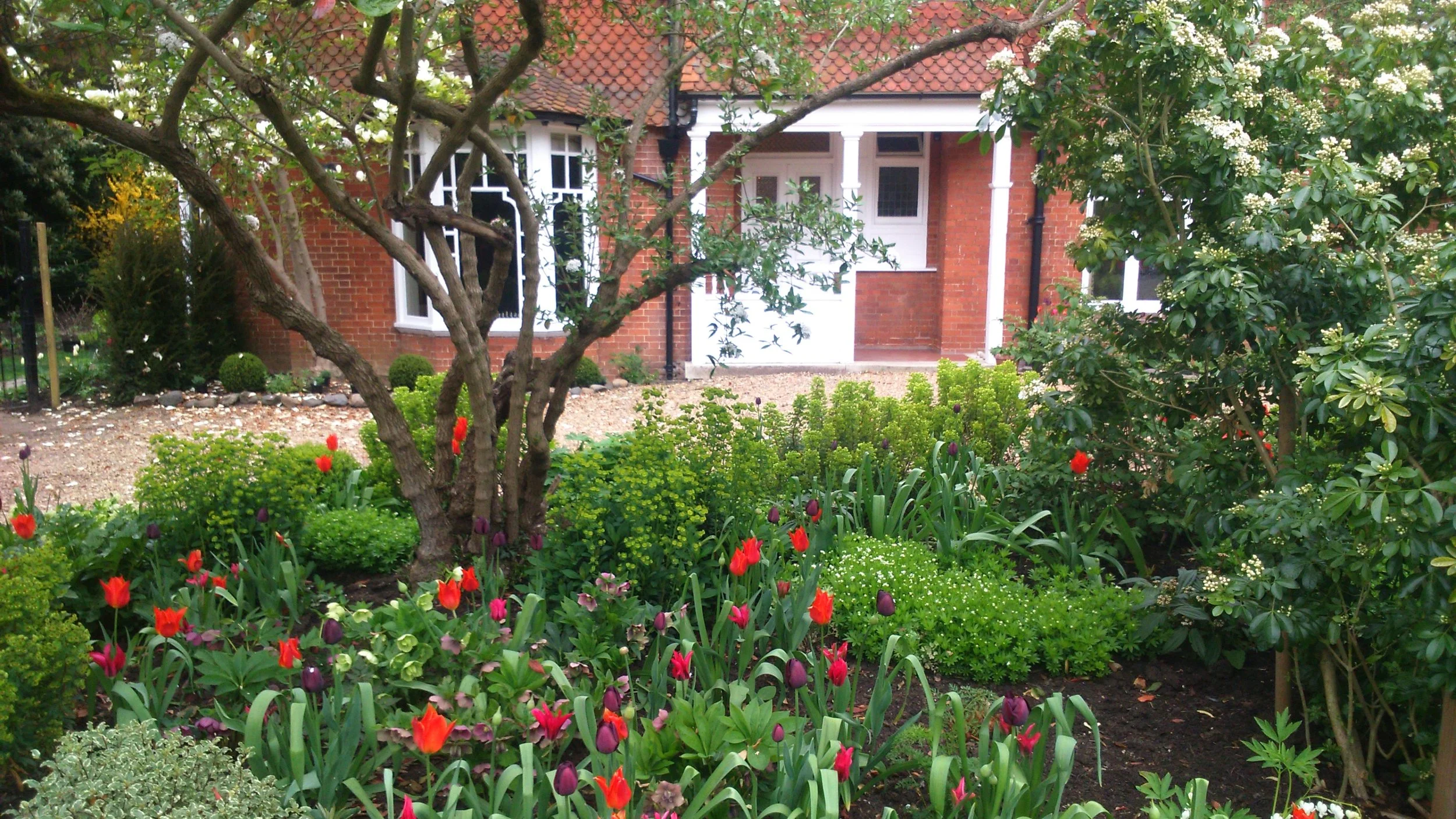Few garden plants are as easy to care for, and provide as much long-term interest as the bulb – and at Abbotswood we can’t get enough of them. Follow our tips, tricks and techniques for fuss-free flowers next year…
Bulbs are the buried treasures of the garden. Lying dormant for months on end, they burst into life once the sun warms the soil and dazzle us like the finest gemstones.
And whether it’s bulbs, rhizomes, corms or tubers, now is the best time to get them in the garden.
Spring flowering bulbs are best planted this side of the winter – with tulips in particular preferring a November planting – but summer flowering bulbs can be planted right up to April. A warm and sunny spot with good drainage is ideal. If you’re planting in a border, do this in groups of six or more for maximum impact. 50 bulbs will make a really impressive show. Pop them in a hole in the soil, shoot end up – double or triple the length of the bulb (so a 5cm bulb will need to go 10-15cm below soil level) and around twice the width of the bulb apart – and cover with soil. That’s it!
Always remember to label them so you know where they are. It’s very easy to dig them all up and have to start all over again.
Yellow fever
For us, nothing heralds the start of spring more than the humble daffodil.
Wordsworth packed 10,000 of them into his famous poem and there are more than 30,000 varieties in the RHS International Daffodil Register, but they all need a good chill to spirit them into action.
The prettiest way to plant them is to naturalise in grass, in areas where you can allow the grass to grow long. And if they’re happy, they will reproduce and increase their display over time.
They also look wonderful as companions to crocus, anemone and hyacinths in the border or in pots, but ensure they don’t get waterlogged as they hate having wet feet. Planting too close together can encourage them to come up ‘blind’ (i.e. all leaves and no flowers) so always give them plenty of room. Divide every five years to improve their performance.
Also, don’t cut down the foliage after flowering (however tempting!), as this will reduce the plant’s ability to inject nourishment into the bulb for the next season.
Home sweet rhizome
If you like a naturalistic look, another early spring star provides bags of potential.
Anemone nemorosa, the wood anemone, and Amenone ranunculoides or blanda, thrive under trees in their natural woodland setting and give an outstanding performance until the canopy thickens in late spring.
Our native anemone plays the part of Snow White with its sparkling flowers, tinged lavender underneath, but there are 40 other colourful cast members to choose from. Planted as rhizomes in shady, humus rich spots these leading ladies will colonise freely, especially if you lavish them with leafmould.
Ivy-leafed cyclamen, Cyclamen hederifolium, also look best en masse and can bulk up over time in even the most hostile dry shade. Their delicate nodding heads and silver patterned leaves make excellent ground cover.
But of course, we must not forget the stalwart of crisp, winter days – the snowdrop.
Contrary to popular belief, snowdrops do not need to planted ‘in the green’. At Abbotswood, we plant thousands successfully from dry, well harvested bulbs lifted from dormant plants in June/July. We’ve found that moving green clumps can in fact damage the plants, making them harder to establish.
For later spring and summer colour, we also love camassias, which naturalise well in damp areas. Their elegant spikes of blue star shaped flowers are glorious pushing up above long grass, and are made all the more precious by the fact they are fleeting. Their entire flowering cycle lasts no more than three weeks.
Pots of colour
Of course, dazzling displays can also be achieved in containers. At Abbotswood, we use the Dutch lasagne method to get that deliciously dense display.
Simply layer the bulbs on top of each other with the largest and latest flowering bulbs in the bottom (i.e. tulips or alliums), around 30cm deep, and the smallest and earliest on the top (i.e. crocus). Each layer should be covered with around 5cm of soil and each bulb should be around 2-3cm apart. Tulips look particularly good planted in this way in containers.
Many of the later spring and early summer flowering bulbs are fabulous packed into pots too. We like fritillary imperialis with its impressive crowns of bell shaped umbels in bright orange and yellow; alliums in violet and blue; or dahlias and lilies. Choose compact varieties and feed once the flower buds appear, as they are voracious feeders.
And, if you’re worried about the height of alliums, try Allium karataviense AGM. This low growing form brings starry pink globes and fleshy leaves to the front of the border.
Inexpensive and yet show stopping (especially at the times of year when other plants are just waking up) bulbs can give years of pleasure to even the smallest garden – and can happily outlive their owner.
And, as the chrysalises of the plant world, it’s hard to believe that these modest brown nodules of nutrients can turn into nuggets of gold.

